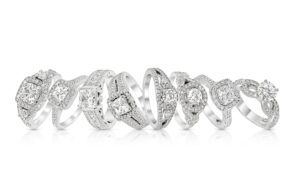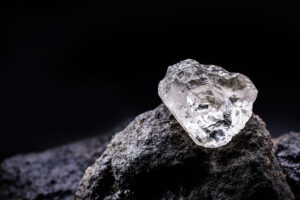
Since ancient times, engagement rings have represented affection and dedication. But the diamond business also has a negative side that is frequently ignored. There are many reasons to think about ethical alternatives to conventional engagement rings, from labor exploitation to the environmental effects of mining.
History
Roman brides were given gold rings as a symbol of their betrothal, which began the custom of engagement rings. In 1477, Archduke Maximilian of Austria gave Mary of Burgundy a diamond ring as a symbol of their engagement, and the trend caught on.
The Dark Side Of The Diamond Industry
Long-standing issues in the diamond business include unethical mining methods and worker exploitation. There are a lot of diamond mines in developing nations, where laborers frequently make extremely low wages and endure hazardous working conditions. Deforestation and soil erosion are just two more negative effects of diamond mining on the ecosystem.
Conflict Diamonds
The topic of conflict diamonds, also referred to as blood diamonds, is one of the most contentious issues involving the diamond business. These are diamonds that are extracted from conflict areas and traded to fund violent conflict with authorities. Conflict diamond sales have fostered violence and violations of human rights in nations like Sierra Leone, Angola, and the Democratic Republic of the Congo.
Ethical Alternatives
Thankfully, there are morally acceptable alternatives to classic engagement rings. Rings made of recycled valuable metals, ethically sourced diamonds, and other eco-friendly materials are now widely available from jewelers. Diamonds from ethical sources are mined in ways that respect the environment, pay miners fairly, and offer them secure working conditions.
Lab-Grown Diamonds

Lab-grown diamonds are another moral substitute for conventional engagement rings. These diamonds are produced in a controlled environment using cutting-edge technology that mimics the growth of diamonds naturally. The only differences between lab-grown and mined diamonds are price and environmental impact. Lab-grown diamonds are physically, chemically, and optically similar to mined diamonds.
Other Sustainable Materials
There are numerous other environmentally friendly materials that can be used in engagement rings, in addition to diamonds that are mined ethically and lab-grown diamonds. For instance, rings can be crafted from wood, sea glass, and recycled valuable metals. The environmental effect of these materials is significantly lower than that of conventional mining methods.
Even though engagement rings are a lovely representation of devotion and love, it’s essential to take into account the negative aspects of the diamond trade. The effects of diamond mining can be disastrous, ranging from worker abuse to environmental harm. Thankfully, there are lots of ethical alternatives to conventional engagement rings, such as lab-grown diamonds, ethically sourced diamonds, and other eco-friendly materials. You can make sure that your symbol of love also represents sustainability and social responsibility by selecting an ethical engagement ring.
